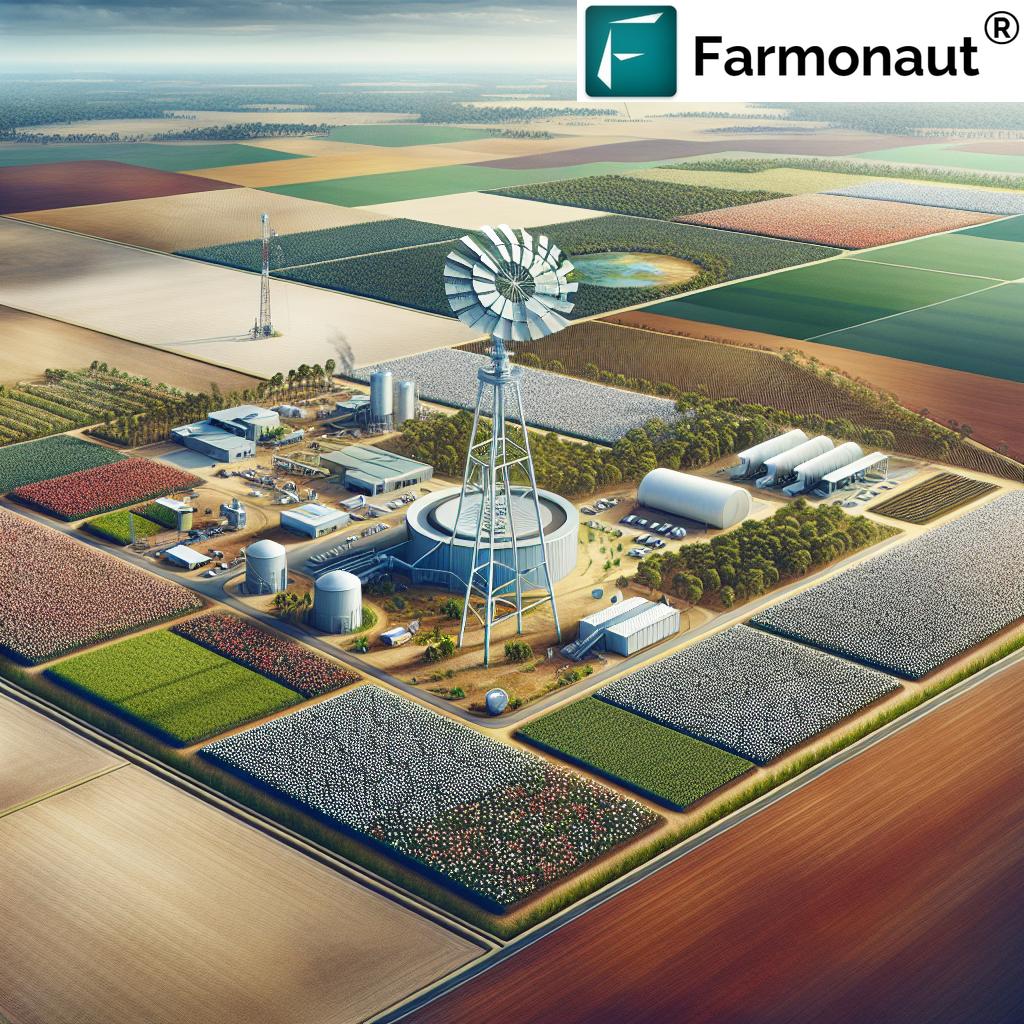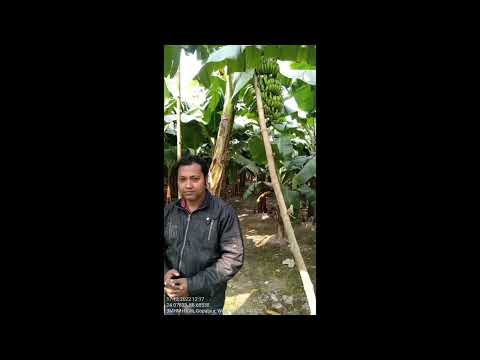Revolutionizing Australian Cotton: Tech-Driven Advancements Boost Sustainable Farming and Global Market Impact
“Australian cotton farmers have improved water efficiency by up to 40% through innovative irrigation techniques and precision agriculture.”
In the vast expanses of Australia’s agricultural landscape, a revolution is taking place. The cotton industry, once challenged by the continent’s harsh climate and limited water resources, has undergone a remarkable transformation. Today, we stand at the forefront of a new era in sustainable cotton farming, where cutting-edge technology and innovative practices are reshaping the future of this critical crop.
As we delve into the world of Australian cotton production, we’ll explore how our farmers and researchers have harnessed the power of technology to overcome environmental challenges, boost productivity, and set new standards for sustainability in global agriculture. From the sun-drenched fields of Queensland to the fertile soils of New South Wales, the story of Australian cotton is one of resilience, innovation, and unwavering commitment to excellence.

The Evolution of Cotton Irrigation Techniques
At the heart of Australia’s cotton revolution lies a fundamental shift in how we manage our most precious resource: water. The development of advanced cotton irrigation techniques has been pivotal in transforming the industry’s water use efficiency and overall sustainability.
- Precision Irrigation Systems: We’ve embraced smart irrigation technologies that utilize soil moisture sensors, weather data, and crop growth models to deliver water precisely when and where it’s needed. These systems have dramatically reduced water wastage and improved crop health.
- Subsurface Drip Irrigation: By delivering water directly to the root zone, subsurface drip systems have minimized evaporation losses and increased water use efficiency by up to 30% compared to traditional surface irrigation methods.
- Automated Irrigation Scheduling: AI-powered scheduling tools now allow farmers to optimize irrigation timing based on real-time data, ensuring that crops receive the right amount of water at critical growth stages.
These advancements have not only conserved water but have also contributed to significant improvements in cotton yield improvement. By precisely managing water application, we’ve been able to create optimal growing conditions that maximize plant health and productivity.
Genetically Modified Cotton: A Game-Changer for Australian Farmers
The introduction of genetically modified (GM) cotton varieties has been a watershed moment for the Australian cotton industry. These innovative plants have revolutionized our approach to pest management, water efficiency, and yield potential.
- Bt Cotton: Engineered to produce its own insecticide, Bt cotton has drastically reduced the need for chemical pesticides, leading to healthier ecosystems and lower production costs.
- Herbicide-Tolerant Varieties: GM cotton resistant to specific herbicides has enabled more effective weed control with less environmental impact.
- Drought-Tolerant Traits: Ongoing research is developing cotton varieties with enhanced drought tolerance, crucial for adapting to Australia’s variable climate.
The adoption of GM cotton has been a key driver in improving sustainability and boosting yields. Australian cotton farmers now produce more cotton per hectare while using fewer resources, setting a new standard for efficient and environmentally responsible agriculture.
Precision Agriculture: The Future of Cotton Farming
Precision agriculture technologies have ushered in a new era of data-driven decision-making in cotton cultivation. By leveraging advanced sensors, satellite imagery, and big data analytics, Australian farmers are optimizing every aspect of their operations.
- Satellite-Based Crop Monitoring: High-resolution satellite imagery allows for real-time monitoring of crop health, enabling early detection of issues and targeted interventions.
- Variable Rate Technology (VRT): VRT systems adjust the application of inputs such as fertilizers and pesticides based on precise field mapping, reducing waste and improving efficiency.
- Yield Mapping: Advanced harvesting equipment now generates detailed yield maps, providing invaluable data for future planning and continuous improvement.
These precision farming techniques have not only boosted productivity but have also contributed to significant reductions in the environmental footprint of cotton production. By minimizing input use and maximizing yields, we’re achieving more sustainable outcomes across the board.
“Australia’s cotton yield has increased by over 300% in the past 30 years due to genetically modified varieties and advanced farming practices.”

Advanced Harvesting Technology: Maximizing Efficiency and Quality
The final stage of cotton production has seen remarkable advancements in recent years, with cotton harvesting technology evolving to meet the demands of modern agriculture. These innovations have not only increased harvesting efficiency but have also improved the quality of the cotton fiber produced.
- Automated Picker Technology: State-of-the-art cotton pickers equipped with onboard computers and GPS guidance systems ensure precise harvesting with minimal waste.
- On-Board Module Builders: These systems compress harvested cotton into modules directly on the picker, streamlining the harvesting process and reducing labor requirements.
- Contamination Detection Systems: Advanced sensors and imaging technologies help identify and remove contaminants during harvesting, ensuring higher quality lint.
By investing in these cutting-edge harvesting technologies, Australian cotton growers have significantly reduced harvesting costs while improving the overall quality and consistency of their product. This technological edge has been crucial in maintaining our competitive position in global cotton market trends.
Sustainable Water Management: The Lifeblood of Australian Cotton
In a country where water scarcity is a persistent challenge, sustainable water management has become the cornerstone of Australian cotton production. Our industry has made remarkable strides in improving water use efficiency, setting new benchmarks for sustainable agriculture globally.
- Water Storage Infrastructure: Investments in on-farm water storage facilities have enhanced our ability to capture and store rainfall, reducing reliance on river systems during dry periods.
- Deficit Irrigation Strategies: By carefully managing water stress at specific growth stages, farmers can optimize water use without significantly impacting yields.
- Recycling and Reuse Systems: Advanced water recycling technologies allow for the capture and reuse of irrigation runoff, further improving overall water use efficiency.
These water management strategies have not only improved the sustainability of cotton production but have also enhanced the industry’s resilience to climate variability. As a result, Australian cotton has become synonymous with efficient water use and environmental stewardship.
The Role of Research in Driving Innovation
Behind every technological advancement in Australian cotton production lies a robust research and development ecosystem. Collaborative efforts between industry bodies, universities, and government agencies have been instrumental in driving innovation and addressing key challenges.
- Variety Development: Ongoing research into cotton genetics aims to develop varieties with enhanced yield potential, fiber quality, and resistance to pests and diseases.
- Soil Health Management: Studies on soil microbiomes and organic matter management are paving the way for more sustainable farming practices that enhance long-term soil fertility.
- Climate Adaptation: Research into climate-resilient farming techniques is helping the industry prepare for future challenges posed by climate change.
This commitment to research and development ensures that Australian cotton growers remain at the forefront of agricultural innovation, continually improving their practices and outcomes.
Global Market Impact: Australian Cotton on the World Stage
The technological advancements and sustainability initiatives in Australian cotton production have not gone unnoticed on the global stage. Our high-quality, responsibly produced cotton has become increasingly sought after in international markets, particularly in Asia.
- Premium Quality: The superior fiber quality of Australian cotton, enhanced by our advanced production techniques, commands premium prices in global markets.
- Sustainability Credentials: Our industry’s commitment to sustainable practices resonates with environmentally conscious consumers and brands worldwide.
- Supply Chain Transparency: Investments in traceability systems allow us to provide detailed information on the origin and production methods of our cotton, meeting the growing demand for transparency in global supply chains.
As global cotton market trends continue to evolve, Australia’s position as a leader in sustainable, high-quality cotton production places us in a strong position to meet future market demands and contribute to a more sustainable textile industry globally.
The Future of Australian Cotton: Challenges and Opportunities
While the Australian cotton industry has made remarkable progress, we recognize that the journey towards truly sustainable agriculture is ongoing. As we look to the future, several key areas present both challenges and opportunities for further advancement:
- Climate Resilience: Developing strategies to adapt to increasingly variable climate conditions will be crucial for long-term sustainability.
- Energy Efficiency: Exploring renewable energy solutions and improving overall energy efficiency in cotton production and processing.
- Circular Economy: Investigating ways to utilize cotton by-products and reduce waste throughout the production cycle.
- Digital Integration: Further integrating digital technologies and artificial intelligence to optimize all aspects of cotton farming and supply chain management.
By addressing these challenges head-on and embracing new technologies, we aim to further cement Australia’s position as a global leader in sustainable cotton production.
Leveraging Technology for Sustainable Growth
As we continue to push the boundaries of innovation in cotton farming, technologies like those offered by Farmonaut play an increasingly crucial role. Farmonaut’s satellite-based farm management solutions provide valuable tools for precision agriculture, enabling farmers to make data-driven decisions that optimize resource use and improve yields.
By leveraging advanced satellite imagery and AI-powered analytics, farmers can gain real-time insights into crop health, soil moisture levels, and potential pest or disease issues. This level of precision allows for targeted interventions, reducing the need for blanket applications of inputs and further enhancing the sustainability of cotton production.
For those interested in exploring these cutting-edge technologies, Farmonaut offers several access points:
- Web App: Access comprehensive farm management tools through your browser.
- Android App: Monitor your fields on-the-go with the mobile application.
- iOS App: Stay connected with your farm data on Apple devices.
- API Access: Integrate Farmonaut’s data and analytics into your existing systems.
These tools represent the next frontier in agricultural technology, offering Australian cotton farmers new ways to enhance their operations and contribute to the industry’s ongoing success story.
| Technology/Technique | Description | Estimated Water Efficiency Improvement | Estimated Yield Increase |
|---|---|---|---|
| Precision Irrigation Systems | Smart systems using sensors and data analytics to optimize water delivery | 20-30% reduction in water usage | 10-15% increase in crop yield |
| Genetically Modified Cotton Varieties | Drought-tolerant and pest-resistant cotton strains | 15-25% reduction in water usage | 20-30% increase in crop yield |
| Remote Sensing Technologies | Satellite and drone imagery for crop health monitoring | 10-20% reduction in water usage | 5-10% increase in crop yield |
| Automated Harvesting Equipment | GPS-guided harvesters with onboard module builders | Minimal direct water efficiency impact | 15-25% increase in harvesting efficiency |
Conclusion: A Sustainable Future for Australian Cotton
The story of Australian cotton is one of transformation and innovation. Through the adoption of cutting-edge technologies and sustainable practices, we have not only overcome the challenges posed by our unique environment but have emerged as global leaders in efficient, high-quality cotton production.
From advanced irrigation techniques to precision agriculture, from GM varieties to state-of-the-art harvesting technology, every aspect of cotton cultivation in Australia has been revolutionized. These advancements have not only boosted productivity and profitability but have also significantly reduced our environmental footprint, setting new standards for sustainable agriculture worldwide.
As we look to the future, the Australian cotton industry remains committed to continuous improvement and innovation. By embracing new technologies, investing in research, and maintaining our focus on sustainability, we are well-positioned to meet the growing global demand for high-quality, responsibly produced cotton.
The journey of Australian cotton from field to fabric is a testament to what can be achieved when innovation, sustainability, and determination come together. As we continue to push the boundaries of what’s possible in cotton production, we invite the world to join us in creating a more sustainable and prosperous future for agriculture.
Frequently Asked Questions (FAQ)
- How has water efficiency in Australian cotton farming improved over the years?
Water efficiency in Australian cotton farming has improved dramatically through the adoption of precision irrigation systems, subsurface drip irrigation, and automated scheduling. These technologies have reduced water usage by up to 40% compared to traditional methods. - What role do genetically modified cotton varieties play in Australian agriculture?
GM cotton varieties have been crucial in improving pest resistance, reducing pesticide use, and enhancing drought tolerance. They have contributed to significant yield increases and improved sustainability in Australian cotton production. - How does precision agriculture benefit cotton farmers in Australia?
Precision agriculture technologies, such as satellite-based crop monitoring and variable rate applications, allow farmers to optimize input use, improve crop health, and increase yields while reducing environmental impact. - What makes Australian cotton sought after in global markets?
Australian cotton is known for its high quality, consistency, and sustainability credentials. Our advanced production techniques and commitment to responsible farming practices make our cotton highly desirable to environmentally conscious consumers and brands. - How is the Australian cotton industry addressing climate change challenges?
The industry is investing in research for climate-resilient varieties, improving water management strategies, and adopting sustainable farming practices to adapt to and mitigate the effects of climate change.



